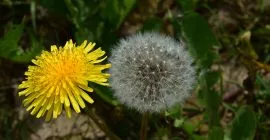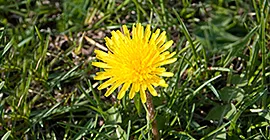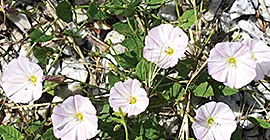Welcome to the unwelcome guests – A comprehensive guide to the top 15 worst garden weeds!!!
Weeds are the bane of every gardener’s existence, often appearing seemingly out of nowhere and wreaking havoc on our carefully tended garden. We face a diverse array of weed species, each with its own unique characteristics and challenges. We know, no body really loves weeding, and above all it takes up valuable gardening time, the solution is simple – identify the weed and treat with the most effective method.
So which are you likely to find in your garden?
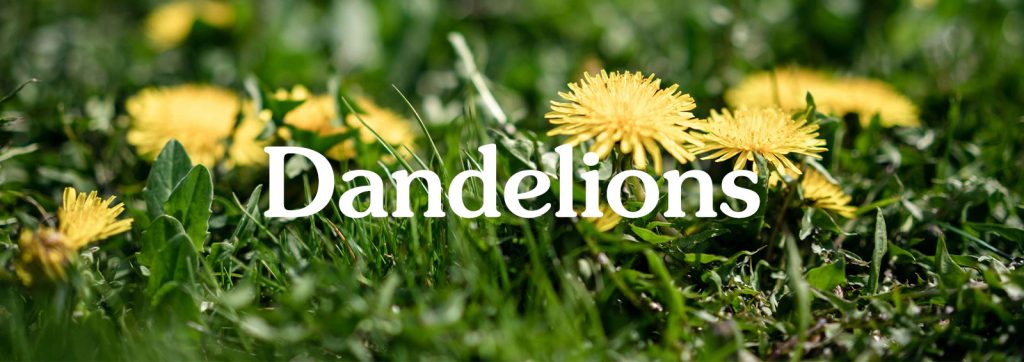
1. Dandelion (Taraxacum officinale)
First, one of the most recognisable and widespread garden weeds, the dandelion has bright yellow flowers and puffball seed heads. Despite its cheerful appearance, dandelions can quickly take over our lawns and flowerbeds, thanks to their deep taproots and prolific seed production.
Control: Regular mowing can help prevent dandelions from flowering and setting seed. Furthermore, removing the taproot is an effective way to cull them. You can try using a good lawn weedkiller such as Resolva Lawn WeedKiller Extra Ready To Use which is also available in a concentrate. This product kills the root of the weed and not your lawn. Furthermore, its simple to use, just apply the product at least 5 days after the last mowing and wait 7 days after application before mowing again.
2. Common Couch Grass (Elytrigia repens)
Next, also known as twitch grass or dog grass, common couch grass is a persistent and invasive weed with creeping rhizomes that can quickly colonise large areas of the garden. Its ability to regenerate from small root fragments consequently it makes it particularly challenging to eradicate.
Control: Regular cultivation to disrupt rhizome growth combined with thorough hand-weeding will help keep couch grass in check. Alternatively, you can cover affected areas with mulch or landscape fabric to smother the weed.
3. Creeping Buttercup (Ranunculus repens)
Creeping buttercup is a low-growing perennial weed with shiny yellow flowers and creeping stems that root at nodes. It thrives in moist, poorly drained soil and can quickly spread to form dense mats, smothering desirable plants.
Control: Improving soil drainage can help discourage the growth of creeping buttercup. Equally, hand-weeding is effective for small infestations, but larger areas may require Resolva Lawn WeedKiller Extra Ready To Use.

4. Ground Elder (Aegopodium podagraria)
Ground elder is a highly invasive perennial weed with aggressive spreading habits. Its fast-growing underground rhizomes can quickly colonize flowerbeds and borders, choking out other plants.
Control: Persistent hand-weeding combined with the use of thick mulch or ground cover plants can help suppress ground elder. Apply Resolva Lawn WeedKiller Extra Ready To Use.
5. Nettles (Urtica dioica)
Common nettles are well-known for their stinging hairs, which can cause irritation upon contact with the skin. As a result, you may want to remove these from our garden or at least control the spread of them. Despite their prickly nature, nettles are valuable to wildlife and have been used historically for medicinal and even culinary purposes.
Control: Regular cutting or mowing will help keep nettles in check, although care should be taken to avoid spreading seeds.
6. Chickweed (Stellaria media)
Chickweed is a low-growing annual weed with small, white flowers and delicate stems. It thrives in moist, shady areas and can quickly spread to form dense mats, particularly in lawns and flowerbeds.
Control: Regular mowing can help prevent chickweed from flowering and setting seed. Hand-weeding is effective for small infestations,. In addition using a weedkiller containing 2,4-D or dicamba should be used for more extensive control. We recommend using Resolva Xtra Weedkiller Ready to Use.
7. Shepherd’s Purse (Capsella bursa-pastoris)
Shepherd’s purse is an annual weed with heart-shaped seed pods and small, white flowers. It thrives in disturbed soil and can quickly spread to form dense colonies in gardens and flowerbeds. However, in some areas of your garden Sheperd’s Purse can be left as it won’t cause a huge amount of competition to well established plants, and it can also provide food for small birds.
Control: Hand-weeding is effective for small infestations of shepherd’s purse, we recommend trying the Kent & Stowe Hand Onion Hoe. Alternatively, you could also try using a herbicide more extensive control – check our or weed control range.
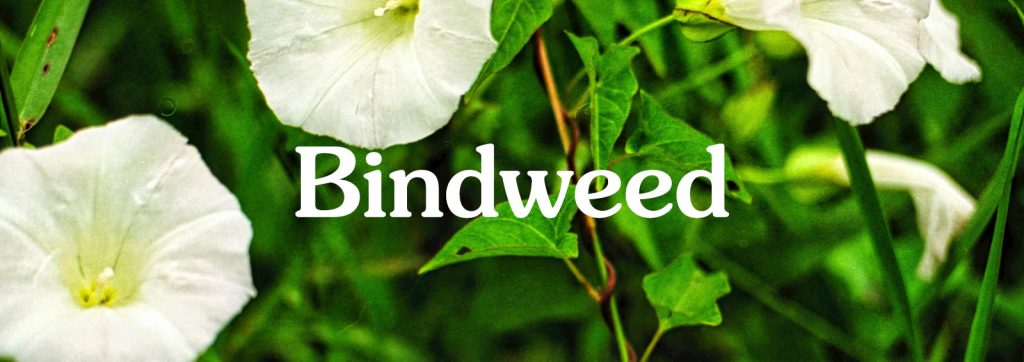
8. Bindweed (Convolvulus arvensis)
Bindweed, also known as creeping Jenny or morning glory, is a twining vine with heart-shaped leaves and trumpet-shaped white flowers. It can quickly smother and outcompete desirable plants in the garden. Although troublesome, the flowers on bindweed do provide pollen for bees.
Control: Hand-pulling bindweed can be challenging due to its deep, persistent root system. Try using a hoe repeatedly throughout growing season and a digging fork to remove roots in autumn and winter to start to eradicate this weed. However, it can take years for the Bindweed to finally get the message!
Thistles encompass a diverse group of weeds, including creeping thistle, spear thistle, and other varieties. They are characterised by their spiny leaves and purple or pink flowers. Creeping thistle is one you’ll likely find in your garden, native to the UK, it can very quickly spread through lawns and borders. Once established, it can be quite difficult to completely eradicate.
Control: Hand-weeding is effective for small infestations of thistles. We recommend repeatedly digging out the roots of this weed to help reduce the problem , but it could take several seasons. Try using a herbicide for further control, reapply when necessary.
13. Cleavers (Galium aparine)
Cleavers, are a low-growing annual weed with clinging almost sticky stems and tiny white flowers. It thrives in shady, moist conditions and can quickly smother other plants. They can definitely be a nuisance in your garden beds! However, allowing cleavers to grow in some areas can help support wildlife and increase the biodiversity of your garden.
Control: Hand-weeding is effective for small infestations of cleavers. What’s more, if you use herbicides this will give you more extensive control, although repeated applications may be necessary.
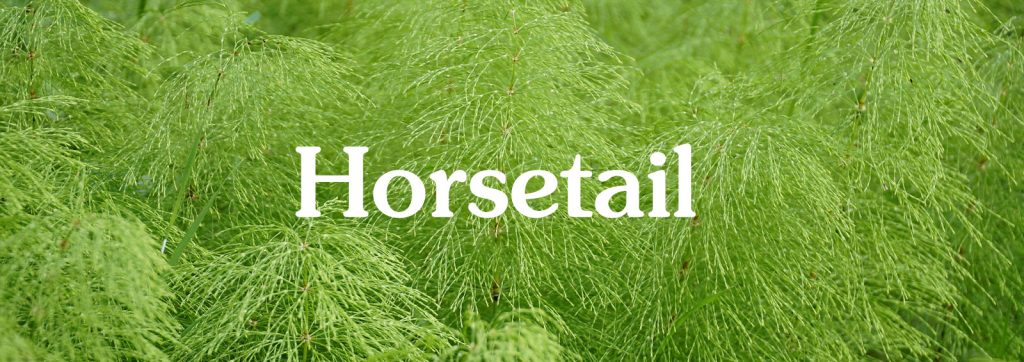
14. Horsetail (Equisetum arvense)
Horsetail, often called mare’s tail is a primitive perennial weed with jointed stems and spore-producing cones. This invasive weed thrives in damp, poorly drained soil and can quickly spread to form dense colonies in gardens and flowerbeds.
Control: Regular cultivation and hand-weeding can help manage horsetail infestations. We recommend trying a cultivator and weeder from the Kent & Stowe range. Herbicides containing glyphosate or systemic weed killers are also effective when applied to actively growing foliage.
15. Brambles (Rubus spp.)
Lastly, brambles grow almost anywhere in the UK, you’ll find them in hedges and areas of woodland. They encompass a group of thorny shrubs, including blackberries and raspberries. Brambles are characterised by their prickly stems and clusters of white or pink flowers.
Control: Regular pruning can help prevent brambles from spreading and becoming invasive. Again, herbicides can be used for selective control, although care should be taken to avoid damaging desirable plants.
In short, as gardeners, we face a diverse array of weed species, each with its own unique characteristics and challenges. By familiarising ourselves with the top 15 worst garden weeds and employing effective control methods, we can help keep these unwelcome guests at bay and importantly maintain healthy, vibrant landscapes. We hope that this guide to the top 15 worst weeds you might find in your garden will help you to keep on top of them with our simple solutions.


